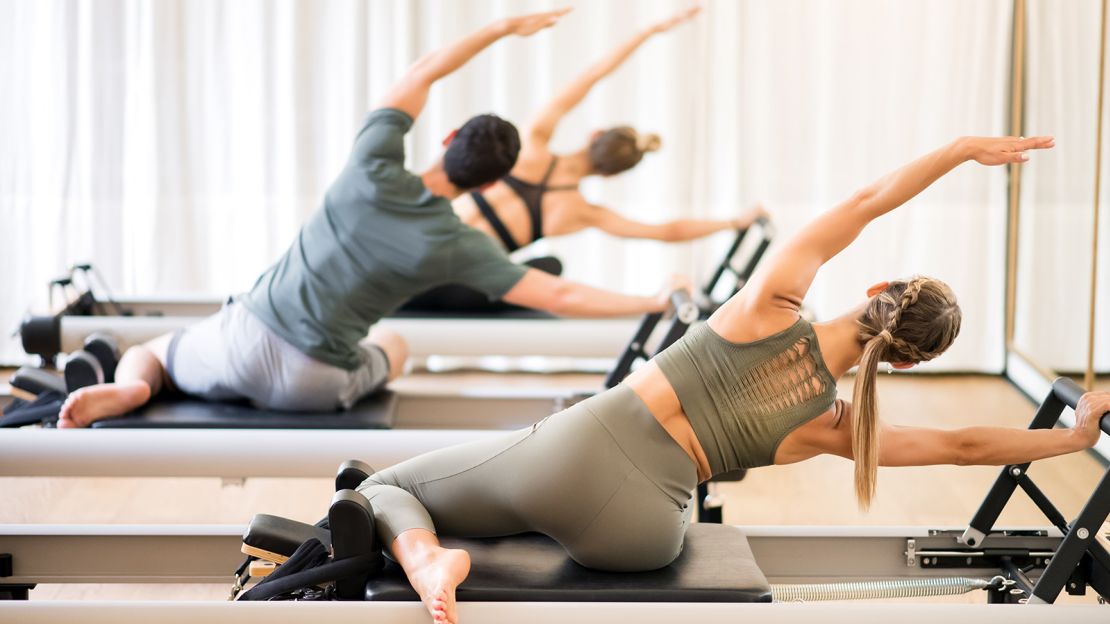If you’ve been injured or have joint problems, low-impact exercises are gentle on your joints. These workouts can still get your heart rate up, strengthen muscles and improve balance and flexibility.
They’re also great for beginners or people coming back from a workout hiatus. Here are some of our favorite low-impact workouts: swimming, cycling, elliptical training, yoga, tai chi and stationary rowing.
Swimming
Swimming is a great option for those with joint pain because it doesn’t put much pressure on your joints. The buoyancy of the water supports up to 90% of your body weight, which reduces the impact of exercise on your joints. Additionally, the water provides resistance to help you build muscle and increase bone strength.
Many people are afraid to exercise when they have pain in their knees or other joints, but it’s important to remember that exercising is beneficial for your joints. However, you may need to find a different type of exercise if you can’t comfortably perform high-impact activities such as running or jumping.
Walking is a good exercise for your joints because it can burn calories and improve your balance, flexibility, and bone health. Whether you’re a beginner or an experienced runner, walking is easy to do almost anywhere and doesn’t require any special equipment.
Cycling
Pedaling a bike is considered a low impact exercise, and it works the lower body (especially the quads) as well as the core. The movement also lubricates the knees, helping alleviate joint pain and stiffness.
Whether you cycle outside or use a bike in your home, cycling offers a fun and competitive workout that can be adapted to a variety of fitness levels. Incorporate interval training, which mixes flat-road sprints with steep incline hills to improve endurance and strengthen the muscles.
Just like swimming, cycling is a great option for those with joint pain because it can provide a full-body workout without the stress on your joints. Just be sure to start out slowly and listen to your body. If you feel sharp pain or any swelling, stop exercising and apply ice afterwards.
Elliptical Training
The elliptical machine allows you to exercise while minimizing the impact on joints. Unlike outdoor running and treadmill workouts, which put a lot of stress on the knees, an elliptical provides a low-impact cardiovascular and muscle-building workout.
Elliptical training can help you build strength, improve balance and mobility, and increase your heart health. You can also try incorporating high-intensity intervals, such as sprinting for 30 seconds with 60-second recovery periods, into your elliptical routine.
While it’s tempting to rely on crutches or other pain relievers when you’re injured, getting active is one of the best ways to reduce joint pain and prevent stiffness and inflammation. Regular exercise strengthens the muscles that support your knees, helps you lose weight, and promotes healthy bones, blood pressure, and mood. If you’re suffering from joint pain, consult your doctor or physical therapist to find the right exercises for your specific needs and limitations. And remember to always warm up before exercising, listen to your body, and take breaks when needed. Resting is just as important as exercise when it comes to managing arthritis symptoms.
Yoga
Yoga is a great exercise to strengthen and support a healthy lifestyle. It helps build flexibility and strength while improving balance and coordination. It can even be used to manage pain and help people feel energized and relaxed. It’s a good idea to talk with your doctor before starting a new exercise program, especially if you have any health issues like diabetes or high blood pressure.
Yoga has been shown to improve knee mobility and reduce pain in older adults with osteoarthritis. It also increases the range of motion of the thoracic spine, which is important for posture and mobility. This is because a lack of mobility in the thoracic spine can result in pain and stiffness in the shoulder, hip, and back.
Research has also shown that regular yoga practice decreases resting pain and morning stiffness in people with OA knees. However, the studies that have been conducted so far are limited in terms of the participants and the conditions being studied. Therefore, it’s important to continue to seek out and participate in more research on yoga for arthritis patients.
Tai Chi
Tai chi is an ancient Chinese practice that involves meditation and controlled breathing combined with slow and gentle movements. It encourages optimal body alignment, which allows the lungs to breathe more easily and joints and muscles to function better. It also promotes balance and mental health, which can help to ease pain. Its benefits are so strong that almost all major healthcare organizations recommend and encourage it.
It has been shown that Tai Chi is effective in reducing chronic pain conditions, such as OA and RA. It also improves balance, which helps prevent falls that can lead to hip fractures. It is important to note that tai chi requires regular practice to see the most significant results.
Several systematic reviews (SRs) have been published regarding the effectiveness of Tai Chi in relieving chronic pain conditions, such as OA and knee osteoarthritis. However, SRs vary in methodology and reporting quality. This review aims to provide an overview of the evidence for Tai Chi in relieving pain and improving balance, gait and functional ability in people with OA.
Water Aerobics
If pounding the pavement or jumping rope puts stress on your joints, water aerobics may be the perfect exercise for you. These workouts are typically done in chest-deep water and help unweight your body by up to 75%, which lessens the impact on your joints. They can also improve flexibility, strength and balance.
Often, these classes have an instructor and include exercises for all skill levels. Walking back and forth in the water helps build cardiovascular endurance, while jogging or doing flutter kicks in the water builds muscle strength. Some instructors even add equipment like foam dumbbells to increase resistance.
The buoyancy of the water also reduces stress on joints, so you can work out without putting a lot of pressure on your knees or ankles. Plus, it can be fun to take a class with a friend or family member and socialize while you’re exercising. A study published in July 2018 found that aging adults who danced regularly improved their physical fitness while experiencing cognitive benefits, such as better sleep and fewer memory problems.
Stationary Rowing
Rowing is a full-body exercise that builds muscle and burns calories. It is also a low-impact workout that is beginner friendly, so you can get stronger without aggravating your joints.
When using a rowing machine, it is important to focus on proper form to reduce your risk of injury. During the catch, knees should remain flexed rather than locked out to prevent injuries like iliotibial band friction syndrome or patellofemoral stress syndrome.
During the drive, you should exhale as your legs push off and pull the handles towards you, creating a controlled breathing pattern that improves performance. You can track your progress with the monitor on most ergs that shows distance and time.
Rowing offers a low-impact, non-weight bearing exercise that can strengthen and improve the flexibility of the joints in your back, hips, shoulders, arms, and abdomen. It can even strengthen the muscles around your knees to alleviate or prevent pain and improve overall knee health. Rowing is a great option for people with arthritis or other joint and bone injuries, especially as a cross-training supplement to high-impact cardio workouts.
Conclusion
The body is designed to move, but painful joints may deter many people from being active. However, even mild exercise can help keep joints healthy and strengthen muscles around the joint. A strong muscle can take the pressure off a stiff joint by absorbing shock and supporting it.
In addition to helping to alleviate pain, exercise can improve mental health and prevent weight gain. It is recommended that people with arthritis be moderately physically active for 150 minutes per week, which can include low-impact exercises like walking, swimming or water aerobics, as well as household chores and gardening.
Lap swimming is a great lower-body workout that can improve strength and flexibility, and the buoyancy of the water relieves pressure on joints. Stationary biking is another great way to burn calories while reducing impact on knees and ankles. Elliptical training, which is a combination of running and cycling, also can provide a good cardio workout without putting too much strain on the joints. For upper-body strength training, try using hand weights or doing a few sets of exercises with light dumbbells in the water.





